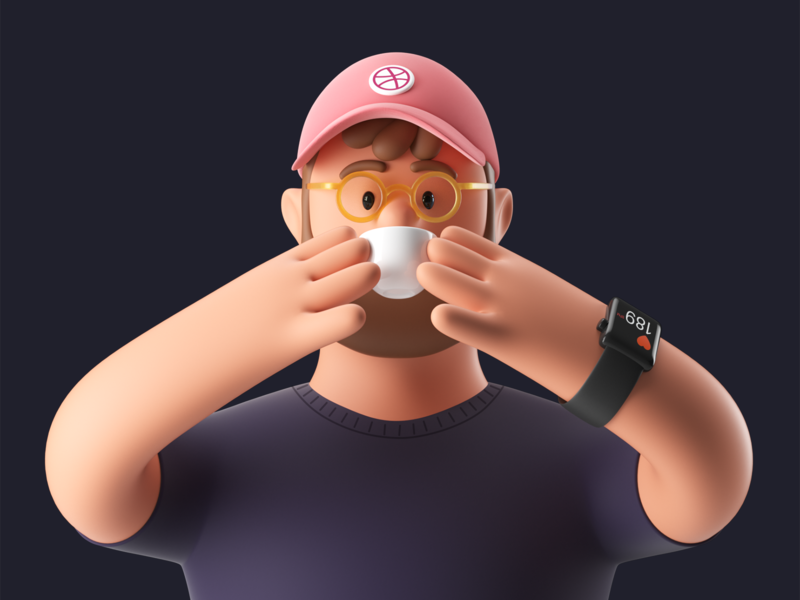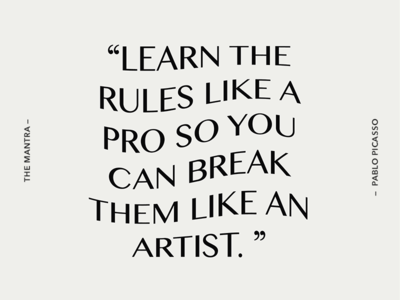- It’s easy to overlook the idea of developing a design style when you’re constantly working with clients and not on your own personal projects. After all, you’re likely going to follow your clients’ existing brand conventions, right?
Your personal style should be flexible enough to work within a client’s brand guidelines, but that doesn’t mean it can’t show up in the work you do. Developing your own style, though, can help attract more of your ideal clients and the kinds of projects you actually get excited for.
When a potential client looks at your portfolio and sees a cohesive style that they love, it will make them much more likely to want to work with you than if they see a mishmash of styles and designs that have no clear identity.
1. Think about the clients you want to serve
Having your own design style is only effective if it’s compatible with the kinds of work your ideal clients want. If your design style is brutalist and edgy but your ideal clients are spas and wellness practitioners, you’re going to have a hard time finding clients.
Look at the websites of the kinds of clients you want to work with and consider what you do and don’t like about them. What could you do better? What changes would you make to better serve their needs?
In addition to the clients you want to serve, look at what’s going on in similar industries. Let’s say, for example, that you really want to work with clients in the medical field. You might also look at sites that cater to more general health, wellness, and fitness. Consider looking at sites that focus on nutrition or holistic health.
Also, look at the industries that are in direct opposition to your ideal clients. Using the medical industry as an example, you might want to look at sites that sell pseudo-science and untested “cures” to all sorts of ailments as an example of the kinds of styles you should probably avoid.
You don’t want to develop a style that’s just a copy of what everyone else is doing in the industries you want to work with, because that wouldn’t be your style. But you do need to keep in mind what those clients want and need. Because at the end of the day, serving your clients (and their audiences) is the most important part of your job as a designer.
2. Consider your competition
When developing your own design style, it’s important to look at what your competitors are doing. This is partly to see what’s already been done, and partly to gather ideas of what you like and don’t like.
You can’t develop your design style in a vacuum and expect it to be successful. You need to see what’s been done and where there’s room to do something different. Take note of the things you like and the things you don’t like.
As Austin Kleon wrote in his book Steal Like an Artist, “What a good artist understands is that nothing comes from nowhere. All creative work builds on what came before. Nothing is completely original.” The key to developing your unique design style is to pull from a variety of sources and make it your own, rather than only looking at what a couple of other designers are doing.
3. Look for inspiration outside the design field
Web and graphic designers tend to look at other web and graphic designers for inspiration. It makes sense on the surface; when you’re designing a website, why wouldn’t you look at other websites for ideas?
But there are so many other areas you can pull from for inspiration. Look at other types of design: fashion, industrial, interior, architectural, product, etc. But look beyond design, too. Look at photography and art for inspiration. Look at nature and your environment, whatever that might be.
Keep a swipe file of visuals you love and craft your design style from that. Keep adding images that fit or complement your style.
4. Bend the rules
Every designer should learn the rules, principles, and conventions of good design. You should take the time to master these things so that they come to your work naturally.
But once you know all of the rules and fundamentals, it’s time to bend them. Maybe you’ll experiment with color palettes that are unexpected and don’t follow the traditional schemes. Or your unique style might be combining fonts in unexpected ways.
The thing to keep in mind is that you really do need to know the rules before you bend them. Understand why they exist, what purpose they serve, and how they create more aesthetically pleasing and functional designs, then consider how you can achieve the same end through different means.
Bending the rules can even include things like only using two main colors in your designs (using more than two colors isn’t really a “rule” but it is a pretty common convention in design), using big typography with an unexpected hierarchy, or using standard elements in unexpected ways.
5. Remember: Your design style should be flexible
While having your own graphic design style is important to building your own brand and attracting the right kinds of clients, you need to keep it flexible. The goal is always to serve your client, and that means in some instances you may need to deviate from sticking rigidly to your style.
If you’re not willing to deviate from your style, then be very mindful of which clients you take on. Make sure you can serve their needs within the constraints you’ve established.
![]() About the Author — Cameron Chapman: Editor. Blogger. Author. Designer. Copywriter. Marketer. Entrepreneur. Speaker. Consultant. Coach. I wear a lot of hats. What most of them have in common, though, is storytelling.
About the Author — Cameron Chapman: Editor. Blogger. Author. Designer. Copywriter. Marketer. Entrepreneur. Speaker. Consultant. Coach. I wear a lot of hats. What most of them have in common, though, is storytelling.
Cre: Dribbble








